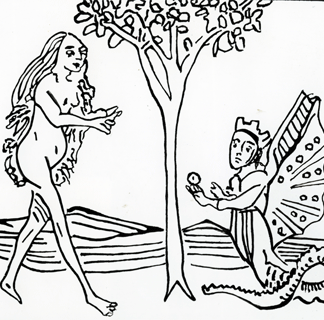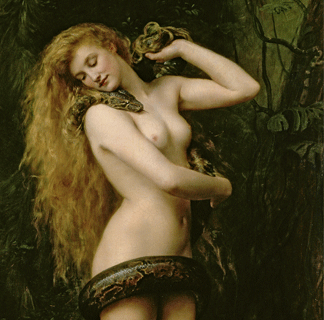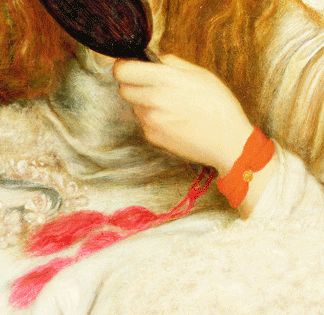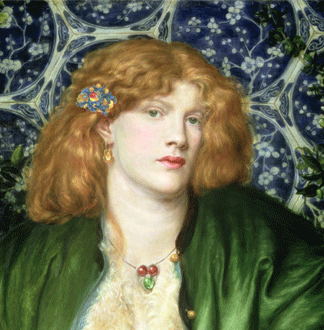Published 03/09/2012
This September sees the unveiling of the Tate Britain’s major exhibition Pre-Raphaelites: Victorian Avant-Garde. To celebrate, we guide you through one of the masterpieces of this extraordinary movement, and a central focus of Tate's blockbuster exhibition: Dante G. C. Rossetti's Lady Lilith.
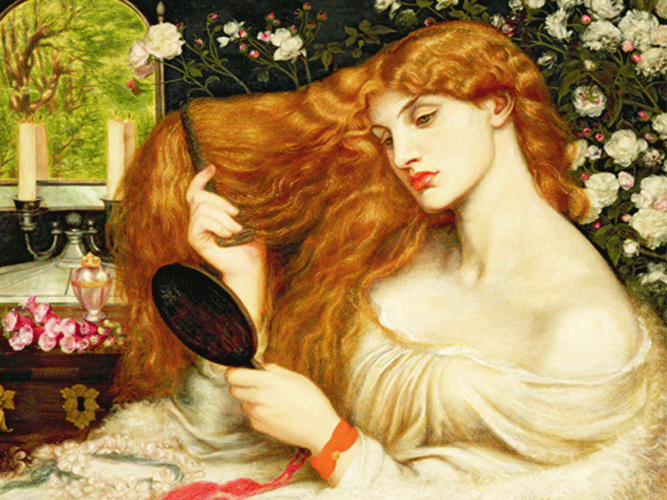
The Subject
The story of Lilith is a fascinating one. As Bridgeman’s cataloguing entry for this piece will tell you, Lilith is a “character in Jewish mythology; first wife of Adam, created from the same clay, who refused to accept that she was not equal to him”. She appears in a number of other traditions as a cursed woman or a she-devil: lustful, unclean, often part animal. She is, arguably, the manifestation of every misogynistic historical stereotype for the evils of womankind - a wicked temptress luring men to their doom. A quick search for Lilith within the Bridgeman archive paints the picture well: beautiful, seductive, undeniably powerful.
|
The Symbolism
The Pre-Raphaelites made great use of symbolic signifiers – items whose “hidden” meanings were not only well-established, but immediately recognisable to a Victorian audience. The language of flowers was particularly important to Rossetti and his contemporaries, keen as they were to accurately represent nature and hark back to the traditions of Renaissance painting. This is evident in our piece: roses, floating behind and to the left of Lilith, symbolise her captivating, feminine beauty; poppies, with their opiatic associations, imply her sensually narcotic power. To her right, the hand mirror and jewellery box connote Lilith’s vanity – an effect enhanced by the languorous, self-indulgent act of brushing her hair.
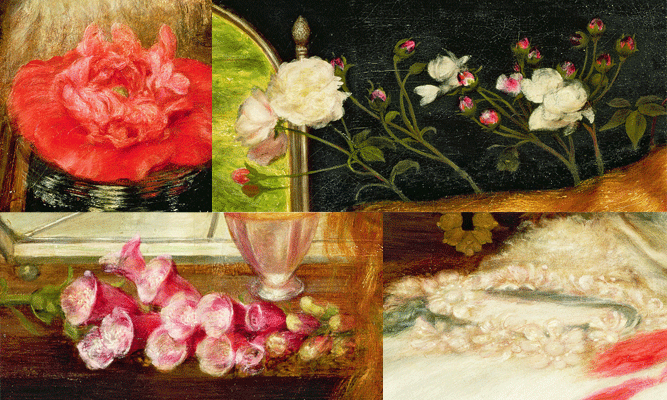
| Rossetti's Treatment In many respects, our protagonist is therefore typified, type-cast. However Rossetti’s Lilith is no two-dimensional monster. There is a gentle grace to her beauty, a stillness to her gaze which implies a deeper sympathy in Rossetti to Lilith’s character. The painter seems to be ambivalent in regard to her personal morals. Lilith’s final accessory, the red string on her left wrist, is a Kaballah bracelet – an item traditionally worn to protect the wearer from the destructive power of the “evil eye” of onlookers. Through this symbol, Rossetti shows himself captivated with a woman whose sexual appeal can be appreciated by a spectator without risk of condemnation. Lilith is not denounced for attempting to lure men with her appearance; rather, she is granted the safeguard of the Kabbalah bracelet to protect her from criticism in the gaze of onlookers. Rossetti’s sympathies are perhaps consistent with his own relationships with women – the artist loved and lived with a number of women outside marriage, including the model for this painting. |
The Model Rossetti’s model was the irrepressible Fanny Cornforth, a woman of ‘corpulent vitality’ to whom Rossetti turned when Lizzie Siddal, his more famous muse, had sickened with depression and laudanum addiction. Fanny was nicknamed ‘The Elephant’ by some of the Pre-Raphaelite brothers and hangers-on, but Rossetti was enamoured by her combination of coarseness and vitality - characteristics perfectly suited to his Lilith. Rossetti’s affair with Fanny lasted for some years before he moved on. Sadly, unlike her painted counterpart, Fanny was left the weaker of the two sexes, heartbroken and finally forced into an unhappy marriage with an alcoholic mechanic. |
|
Love the Pre-Raphaelites? Win tickets to the Tate Blockbuster Show
Question: Who was the model for the iconic painting Ophelia by Sir John Everett Millais?
Please send answers to competition@bridgemanart.co.uk by 18 September 2012. One correct answer will be picked randomly and the winner will be sent a complimentary pair of tickets to be used at any time during the exhibition. Good luck!
Pre-Raphaelites: Victorian Avant-Garde at Tate Britain
12 September 2012 – 13 January 2013
£14, concessions available
Find out more about the Pre-Raphaelite Brotherhood:

